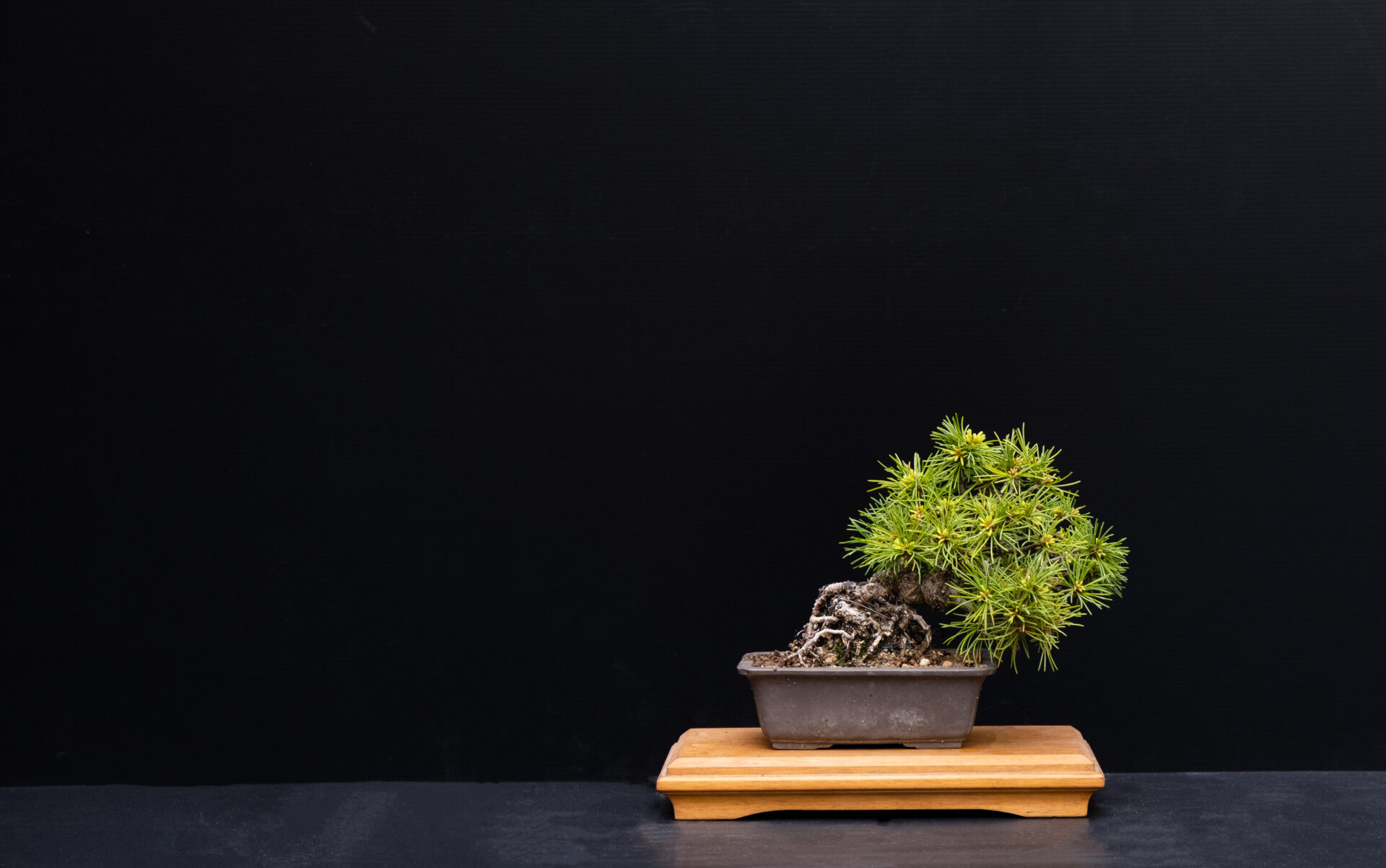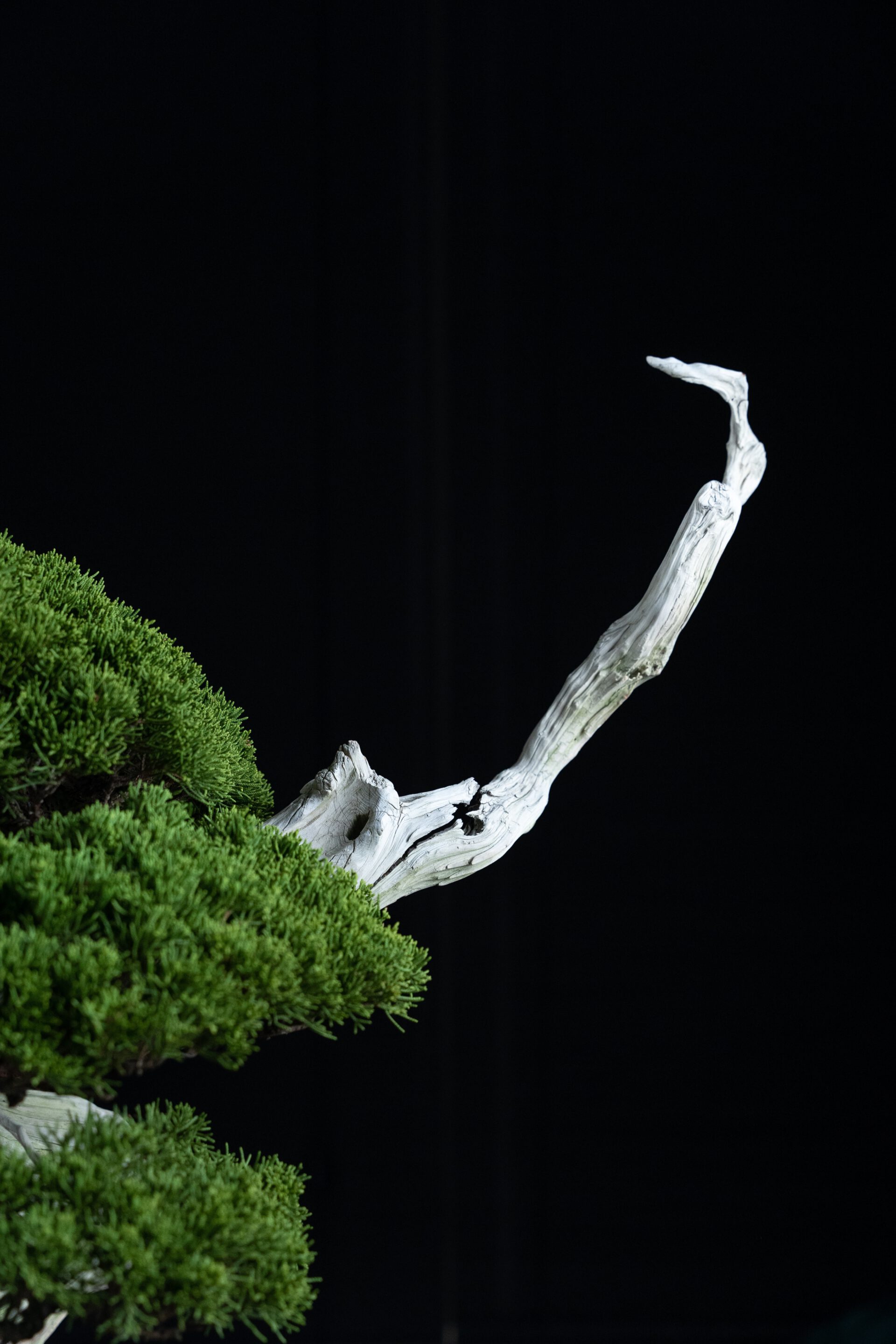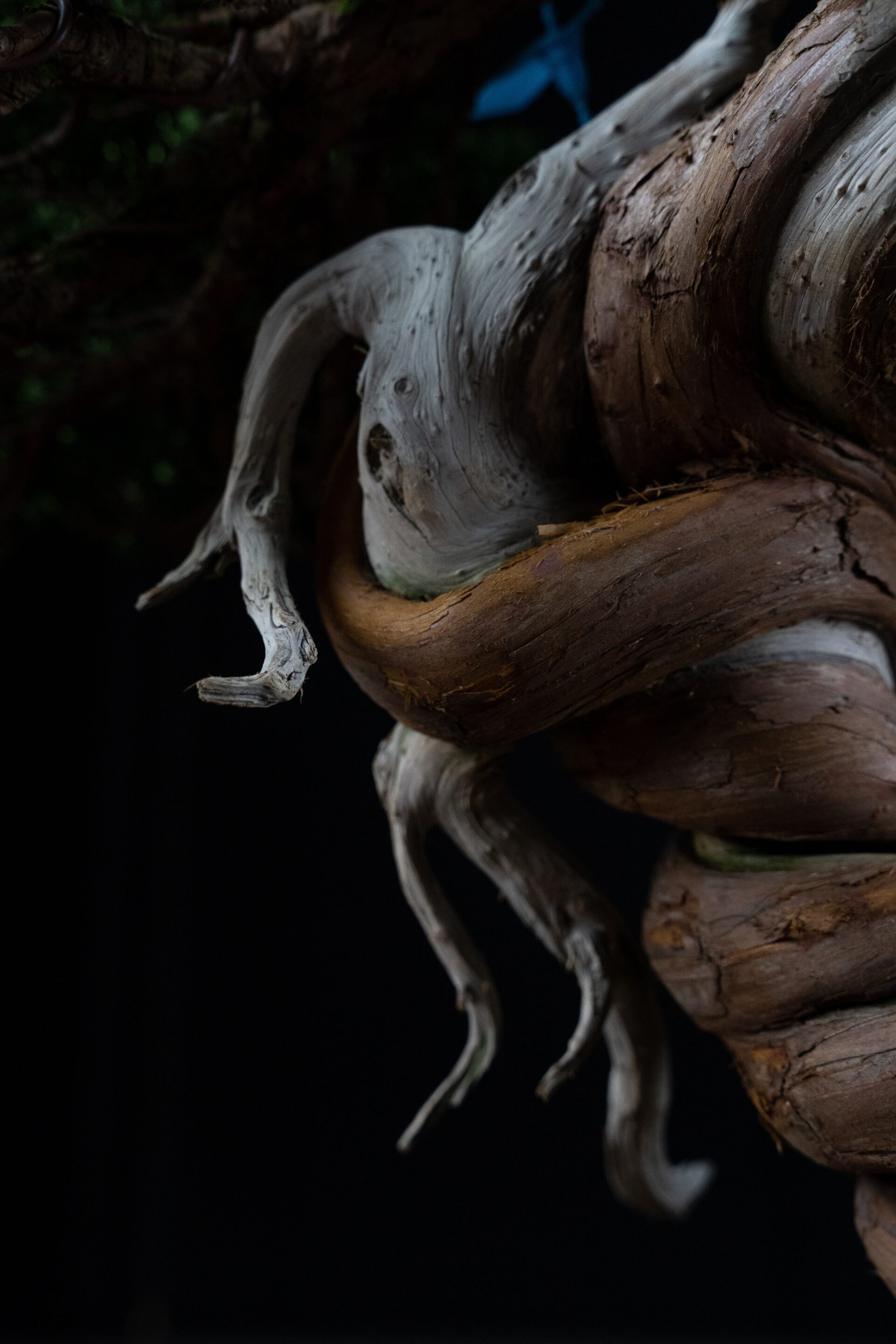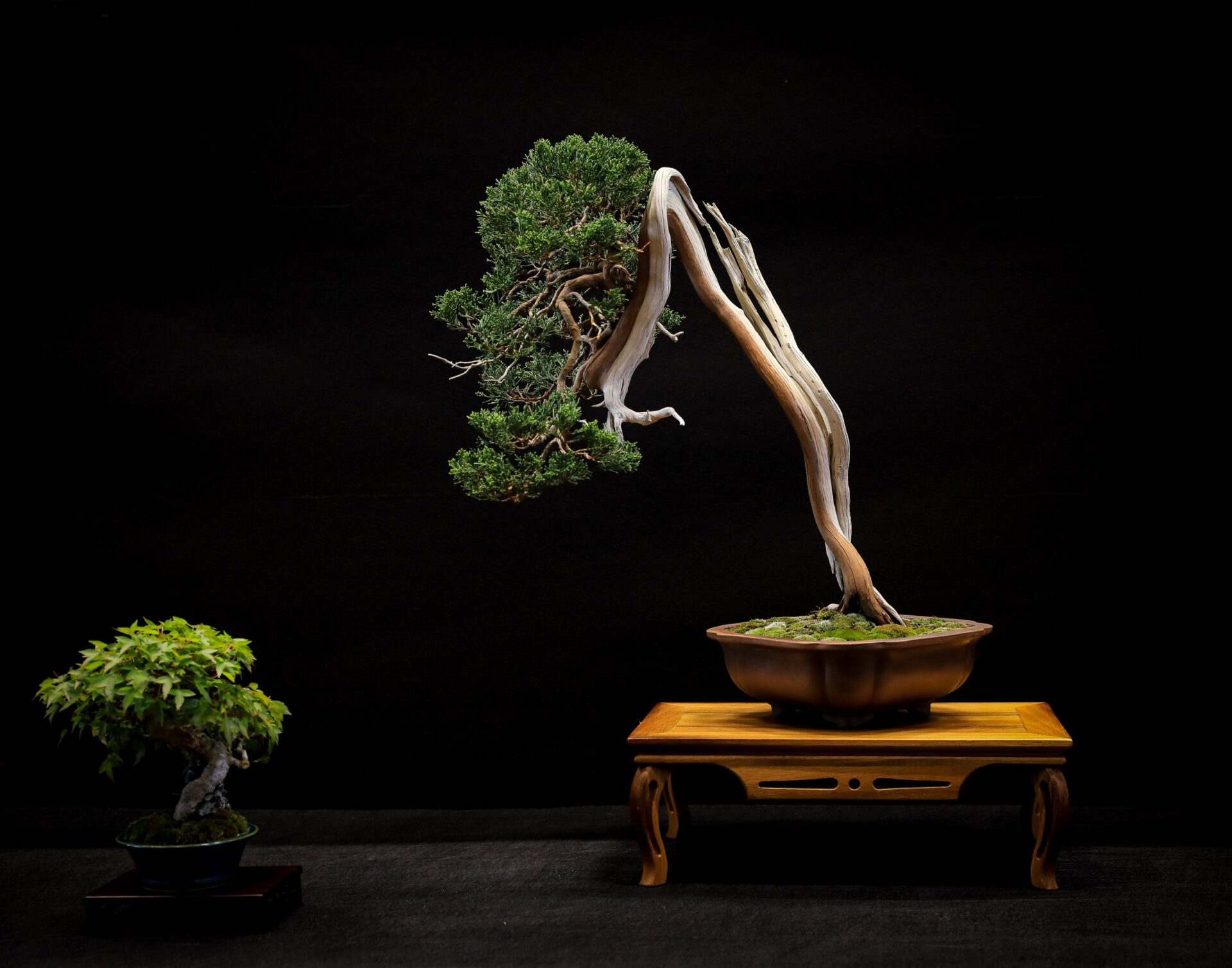Small universe where natural beauty and artificial beauty intertwine…
Discover the charm of "BONSAI"
Bonsai, the traditional Japanese art of cultivating plants, showcases their natural beauty in a small pot.
Bonsai, which allows you to enjoy both natural and artificial beauty, used to be considered a high-grade hobby, but in recent years, stylish pots and easy to grow varieties have increased, making it popular among the younger generation. Furthermore, it has begun to attract attention overseas as "BONSAI."


About BONSAI
As the name suggests, Bonsai only becomes "Bonsai" when the pot and the plant are combined. No matter how elaborate the pot, the main focus of appreciation for a potted plant is always the plant, but Bonsai is appreciated as a whole, combining the plant and the pot.
Therefore, there is the enjoyment of choosing a pot and matching it with the tree, taking into consideration its history and background. What clearly distinguishes Bonsai from other works of art and furnishings is that they are truly alive. Their appearance changes every day, and you can feel the seasons and the life in them. With Bonsai, you can enjoy the beauty of change and constancy over the course of time, and the interweaving of nature and man.

History of BONSAI
The origins of what we now call "Bonsai" can be traced back to a Chinese mural from about 1,300 years ago. The mural depicts a shallow bowl (tray) with two stone-like blocks on top of which is a plant. It is unclear what the plant in the shallow bowl (tray) was called, but this is one of the oldest pieces of evidence for modern day "Bonsai."
Bonkei → "Bonsan" → "BONSAI"
In Japan, "bonkei", which was introduced from China during the Heian period (794-1185), was called "bonsan" after being given a uniquely Japanese aesthetic sense, and became popular as a hobby among the aristocracy of the Heian period and samurais of the Kamakura period (1192 - 1333).
In the traditional Japanese musical performing arts, there is a play called "Hachiki" in Noh and "Bonsan" in Kyogen, and these have been passed down to the present day. The name "Bonsai" seems to have started to be used during the Meiji period (1868-1912). Bonsai has been considered a refined hobby since the Meiji period, but as cultivation and maintenance take time and effort, coupled with changes in people's living environments, the number of Bonsai enthusiasts has gradually increased among older people with more free time.
Spreading to the world, known as "BONSAI"
Since the 1990s, Bonsai has been gaining attention overseas, and the word "Bonsai" has now become a common word around the world. Overseas, there are many young Bonsai enthusiasts, and the trend is still spreading. This impact have trigered the number of young Bonsai enthusiasts is increasing, especially those who love small bonsai in Japan.
Is "BONSAI" just a hobby for the upper class?
Before it started to attract attention overseas, Bonsai was seen as a luxury hobby for the elderly and those with financial means. In fact, up until the Edo period (1603-1868), aristocrats and samurais, and from the Meiji period onwards, even politicians and wealthy businessmen, had Bonsai as a hobby, and it became widely known to the public as trend.
It is speculated that this is why people have come to have this kind of perception. However, there are documents showing that general people also enjoyed Bonsai during the Edo period, which shows that it was by no means a hobby reserved for the upper class.
Basics of BONSAI
【Shape】
In the world of Bonsai, there is a classification called tree shape, which is a basic "form."
1. Straight trunk and patterned tree
A tree with a single trunk that grows straight is called a "straight trunk," while one with a varying trunk is called a "patterned tree." These two forms are considered the most typical tree shapes. Also, a trunk that leans diagonally is called a "diagonal trunk." A tree with two trunks is called a "double trunk," and one with more than that is called a "three trunk," "four trunk," or "five trunk," and it is considered good to have an odd number of trunks for three or more trunks.
2. Windsocks and cliffs
A tree with a tilted trunk swaying in a strong wind is called a "windsock," while a tree hanging down from a steep cliff is called a "hanging cliff." Both of these represent trees enduring the harshness of the natural environment.
3. Root network and group planting
When multiple trunks grow out from one root, they are called "root-connected trees," and when several trees are planted in one pot, they are called "yoseue."

A culture that is passed down
In Japan, there has been a tradition of "mitate asobi" since ancient times. Playfulness is a culture itself, and Bonsai is thought to have inherited that culture. Also, this idea of feeling infinity from a world that has been stripped down to its bare essentials is something that is connected to the Japanese concept of "wabi-sabi."
【BONSAI】 A modern art
that embodies the Japanese concept of wabi-sabi
By placing moss and decorative soil around the base of a bonsai tree, you can enjoy it like a miniature garden. Expressing the natural world in a limited space has a deep appeal as an art that embodies the Japanese concept of "wabi-sabi." Taking the time to create a "miniature scale of nature," the way each branch grows, and even the moss in the pot all add to the worldview of Bonsai. Also, withered trunks and branches are generally considered to be deteriorated, but in Bonsai they are valued as a "flavor" that gives a sense of "wabi-sabi."
Bonsai reflects the creator's view of nature and is sometimes an expression of living art. Not only is it decorative, but immersing oneself in caring for it can soothe the soul, and allowing the plant to bloom and bear fruit can bring a sense of accomplishment. In this way, the appeal and healing power of Bonsai in modern society has brought about a wide variety of ways to enjoy it and brought about change, and while inheriting traditions, it continues to evolve on a global scale with the times.

